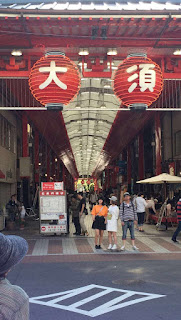Noise, especially traffic noise, is a seemingly inescapable fact of city life. Vehicles are noisy everywhere, but noise pollution is a particular problem in South Asia’s urban centers. Delhi is no exception, and I always come prepared with an ample supply of my favorite earplugs. I am very grateful, then, to have found a truly peaceful neighborhood on the western bank of the Yamuna River to call home during the past several weeks of fieldwork in Delhi.
Majnu ka Tilla (or MT, as it is popularly known) is a designated settlement for Tibetan refugees. Quite contrary to the negative visions that might be conjured by the term “refugee colony,” India’s Tibetan population is well-settled and united under the Tibetan government-in-exile led by the Dalai Lama, whose portrait is prominently displayed in every establishment. MT gives the impression of strong community organization and economic prosperity. Its streets are swept clean daily. Residents and visitors alike crowd into restaurants and cafes throughout the day and, although owners and senior managers are almost invariably Tibetan, employees are drawn from all backgrounds and from across northern India and Nepal. Tibetan, Hindi, Nepali, and English languages are all heard in good measure. Delhi’s rather dour and aggressive public culture is nowhere in evidence, apparently left behind at the colony gates.
The colony draws a wide range of visitors. MT is an important stopover point for Tibetan monks traveling between Dharamsala, Kathmandu, and monasteries across India and the world. It is also located near the north campus of Delhi University and has long been a popular student haunt. A friend who studied at DU in the late 1970s and early 1980s tells me he used to visit to drink cheap chhaang (Tibetan rice beer). These days, there are still plenty of students, but the neighborhood has earned a reputation as a foodie destination and draws weekend crowds from across Delhi’s large middle class. My friend’s daughter, now a student at DU herself, is a regular in MT; I have reassured my friend that the chhaang dens of his youth are nowhere to be seen, replaced by air conditioned cafes and restaurants of a high standard that serve food from across Asia, including Tibet, Nepal, Korea, and India’s northeast.
Another standout characteristic of MT is its nearly traffic-free character. Its alleys are too narrow to permit cars, and while the occasional motorcycle makes its way through, the colony is essentially a pedestrian zone. This is rare anywhere in the world but, in a city of heavy, aggressive traffic, it makes MT a true gem. Residents who own cars park them outside the colony walls. Deliveries are offloaded outside the colony and brought in by cycle rickshaw.
I am grateful for the refuge that MT has provided during my work in Delhi: a friendly and peaceful place to write, read, decompress and, of course, eat, after a day out and about. But what about the chhaang? This is my third time staying in Majnu ka Tilla, and until a few days back I thought the colony had gone completely dry. Not so! No doubt the best chhaang is brewed at home and kept for personal consumption. The other night, though, I did find a very good cup of traditional Naga rice beer. At 120 rupees (around $2) a glass, it’s far from the cheap chhaang of my friend’s youth or that I would sometimes buy out of Castrol motor oil jugs along the East-West highway during previous work in Nepal. The quality is the best I’ve had: slightly sour, and a little thick.
I am off to Lucknow tomorrow for the next stage of my work. But, I am already looking forward to a few more nights in peaceful MT at the end of the summer.
Sam Frantz is a doctoral student in political science, and a recipient of a 2017 Sigur Center Grant for Asian Field Research.












